José Miguel Mateos-Ramos
Unsupervised Learning for Gain-Phase Impairment Calibration in ISAC Systems
Oct 05, 2024



Abstract:Gain-phase impairments (GPIs) affect both communication and sensing in 6G integrated sensing and communication (ISAC). We study the effect of GPIs in a single-input, multiple-output orthogonal frequency-division multiplexing ISAC system and develop a model-based unsupervised learning approach to simultaneously (i) estimate the gain-phase errors and (ii) localize sensing targets. The proposed method is based on the optimal maximum a-posteriori ratio test for a single target. Results show that the proposed approach can effectively estimate the gain-phase errors and yield similar position estimation performance as the case when the impairments are fully known.
Joint Communication and Sensing for 6G -- A Cross-Layer Perspective
Feb 14, 2024
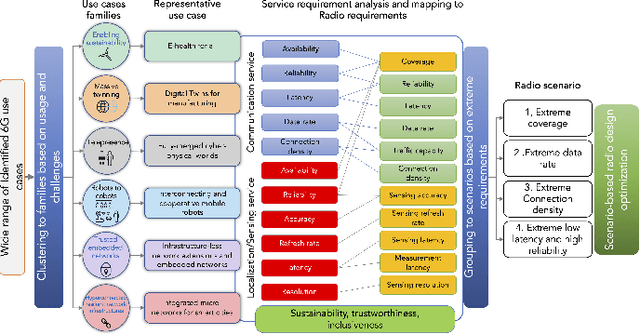
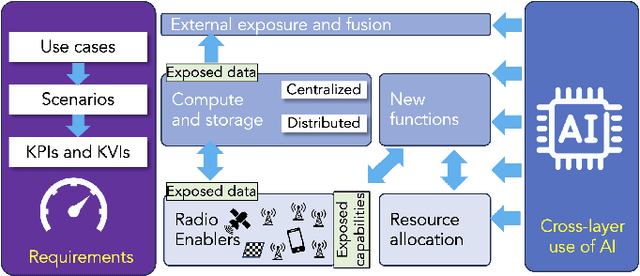
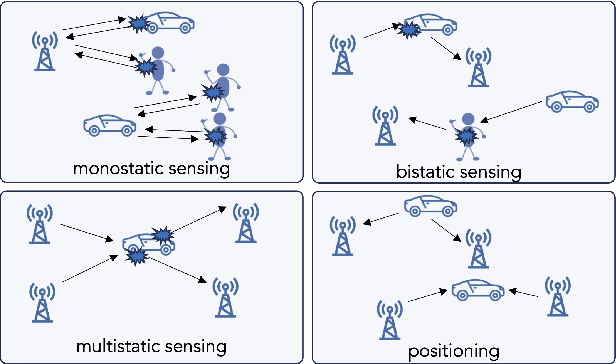
Abstract:As 6G emerges, cellular systems are envisioned to integrate sensing with communication capabilities, leading to multi-faceted communication and sensing (JCAS). This paper presents a comprehensive cross-layer overview of the Hexa-X-II project's endeavors in JCAS, aligning 6G use cases with service requirements and pinpointing distinct scenarios that bridge communication and sensing. This work relates to these scenarios through the lens of the cross-layer physical and networking domains, covering models, deployments, resource allocation, storage challenges, computational constraints, interfaces, and innovative functions.
Semi-Supervised End-to-End Learning for Integrated Sensing and Communications
Oct 15, 2023



Abstract:Integrated sensing and communications (ISAC) is envisioned as one of the key enablers of next-generation wireless systems, offering improved hardware, spectral, and energy efficiencies. In this paper, we consider an ISAC transceiver with an impaired uniform linear array that performs single-target detection and position estimation, and multiple-input single-output communications. A differentiable model-based learning approach is considered, which optimizes both the transmitter and the sensing receiver in an end-to-end manner. An unsupervised loss function that enables impairment compensation without the need for labeled data is proposed. Semi-supervised learning strategies are also proposed, which use a combination of small amounts of labeled data and unlabeled data. Our results show that semi-supervised learning can achieve similar performance to supervised learning with 98.8% less required labeled data.
Model-Based End-to-End Learning for Multi-Target Integrated Sensing and Communication
Jul 09, 2023



Abstract:We study model-based end-to-end learning in the context of integrated sensing and communication (ISAC) under hardware impairments. A monostatic orthogonal frequency-division multiplexing (OFDM) sensing and multiple-input single-output (MISO) communication scenario is considered, incorporating hardware imperfections at the ISAC transceiver antenna array. To enable end-to-end learning of the ISAC transmitter and sensing receiver, we propose a novel differentiable version of the orthogonal matching pursuit (OMP) algorithm that is suitable for multi-target sensing. Based on the differentiable OMP, we devise two model-based parameterization strategies to account for hardware impairments: (i) learning a dictionary of steering vectors for different angles, and (ii) learning the parameterized hardware impairments. For the single-target case, we carry out a comprehensive performance analysis of the proposed model-based learning approaches, a neural-network-based learning approach and a strong baseline consisting of least-squares beamforming, conventional OMP, and maximum-likelihood symbol detection for communication. Results show that learning the parameterized hardware impairments offers higher detection probability, better angle and range estimation accuracy, lower communication symbol error rate (SER), and exhibits the lowest complexity among all learning methods. Lastly, we demonstrate that learning the parameterized hardware impairments is scalable also to multiple targets, revealing significant improvements in terms of ISAC performance over the baseline.
Model-Driven End-to-End Learning for Integrated Sensing and Communication
Dec 20, 2022Abstract:Integrated sensing and communication (ISAC) is envisioned to be one of the pillars of 6G. However, 6G is also expected to be severely affected by hardware impairments. Under such impairments, standard model-based approaches might fail if they do not capture the underlying reality. To this end, data-driven methods are an alternative to deal with cases where imperfections cannot be easily modeled. In this paper, we propose a model-driven learning architecture for joint single-target multi-input multi-output (MIMO) sensing and multi-input single-output (MISO) communication. We compare it with a standard neural network approach under complexity constraints. Results show that under hardware impairments, both learning methods yield better results than the model-based standard baseline. If complexity constraints are further introduced, model-driven learning outperforms the neural-network-based approach. Model-driven learning also shows better generalization performance for new unseen testing scenarios.
End-to-End Learning for Integrated Sensing and Communication
Nov 03, 2021
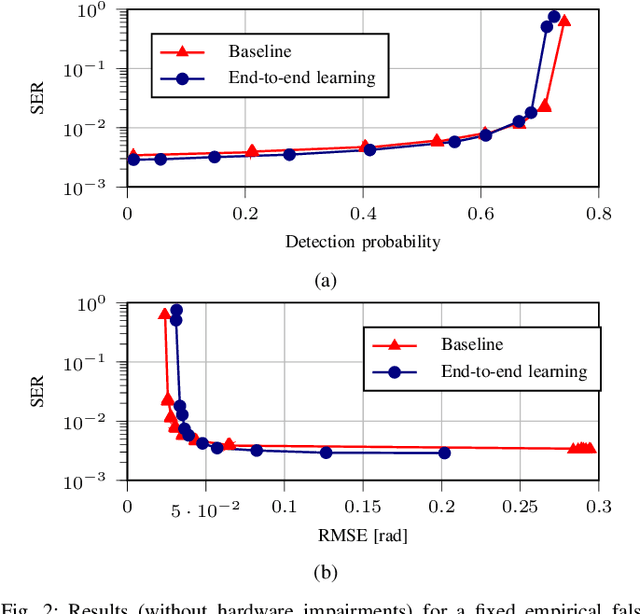
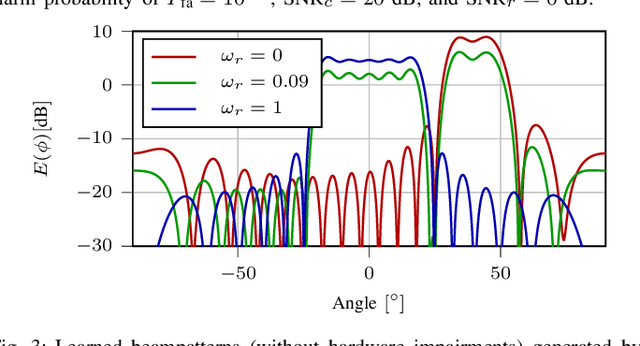
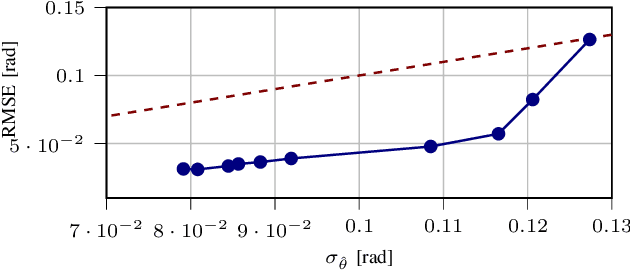
Abstract:Integrated sensing and communication (ISAC) aims to unify radar and communication systems through a combination of joint hardware, joint waveforms, joint signal design, and joint signal processing. At high carrier frequencies, where ISAC is expected to play a major role, joint designs are challenging due to several hardware limitations. Model-based approaches, while powerful and flexible, are inherently limited by how well the models represent reality. Under model deficit, data-driven methods can provide robust ISAC performance. We present a novel approach for data-driven ISAC using an auto-encoder (AE) structure. The approach includes the proposal of the AE architecture, a novel ISAC loss function, and the training procedure. Numerical results demonstrate the power of the proposed AE, in particular under hardware impairments.
 Add to Chrome
Add to Chrome Add to Firefox
Add to Firefox Add to Edge
Add to Edge